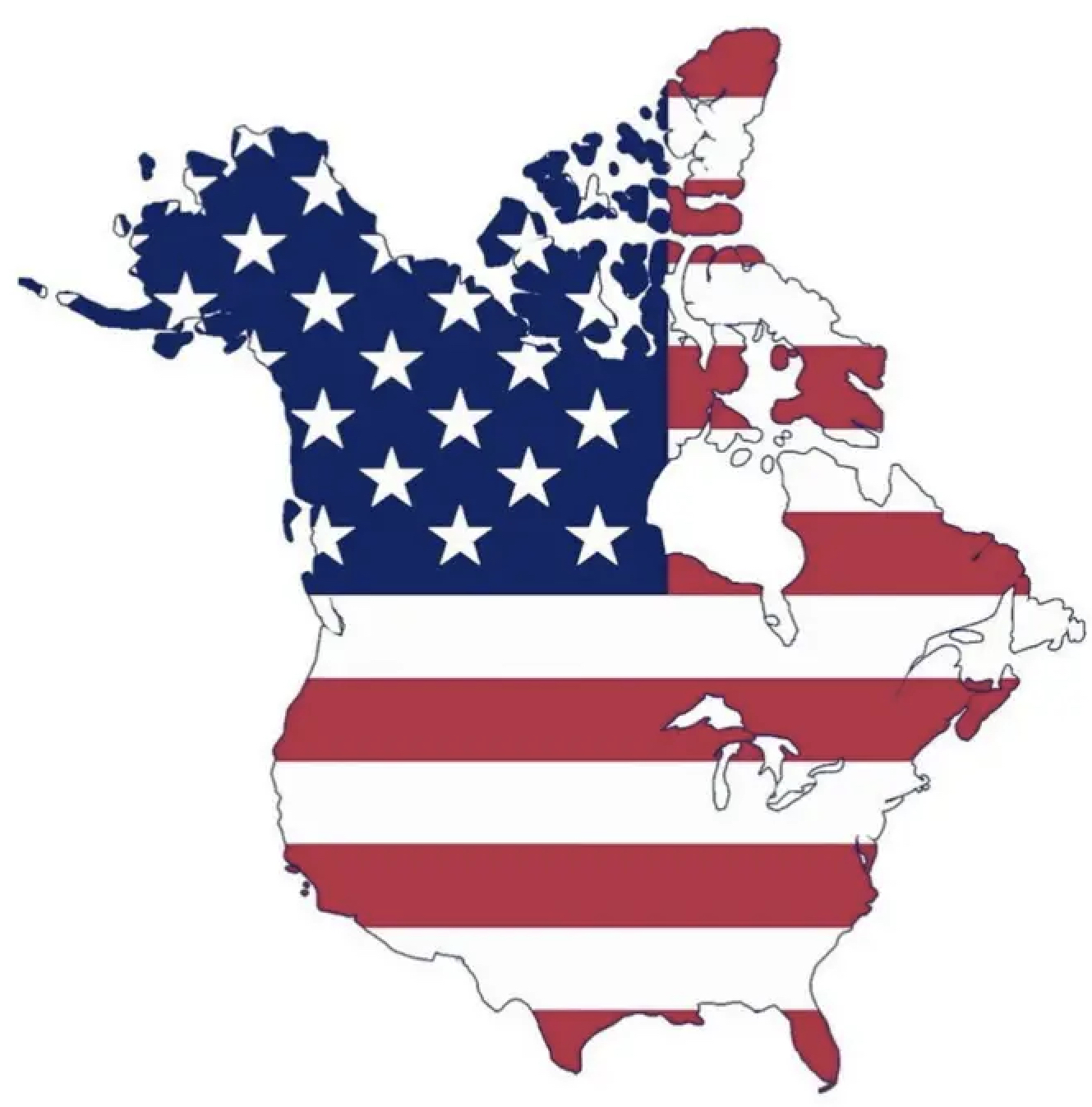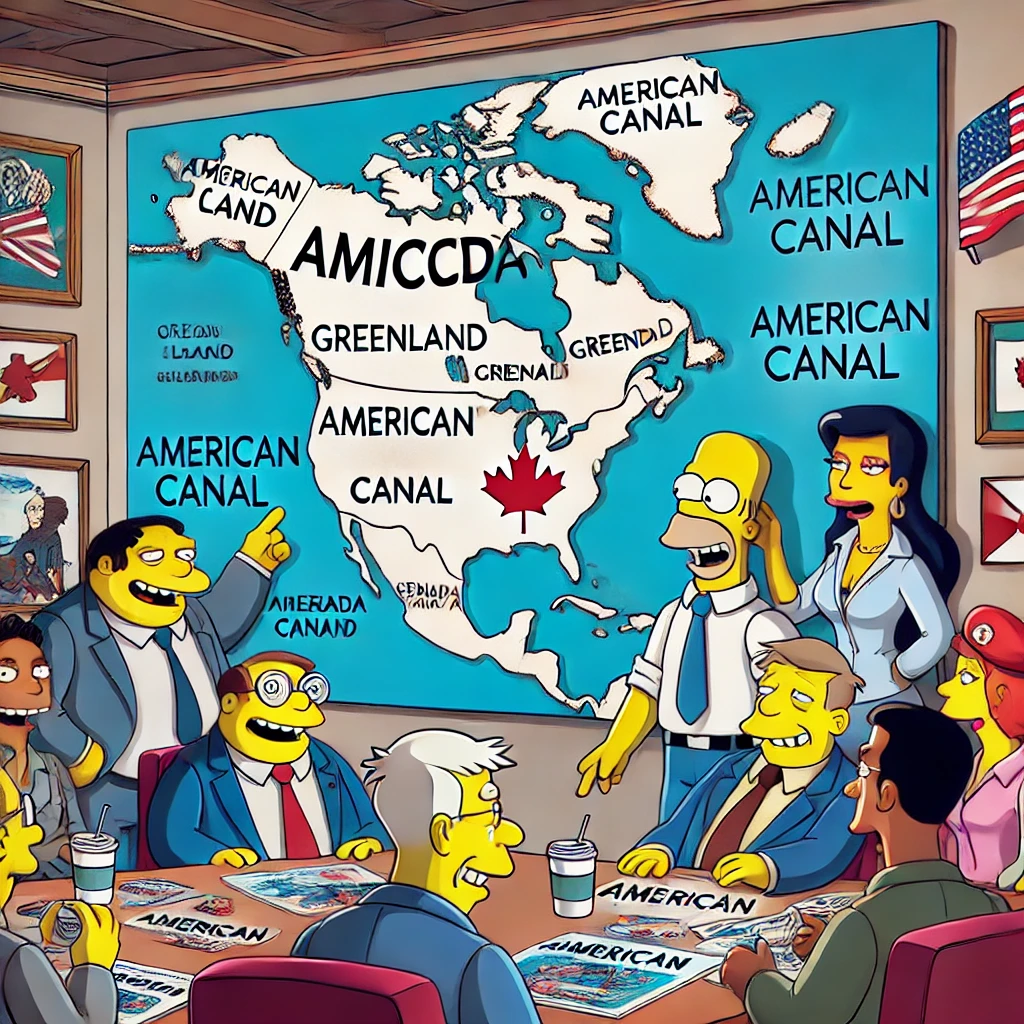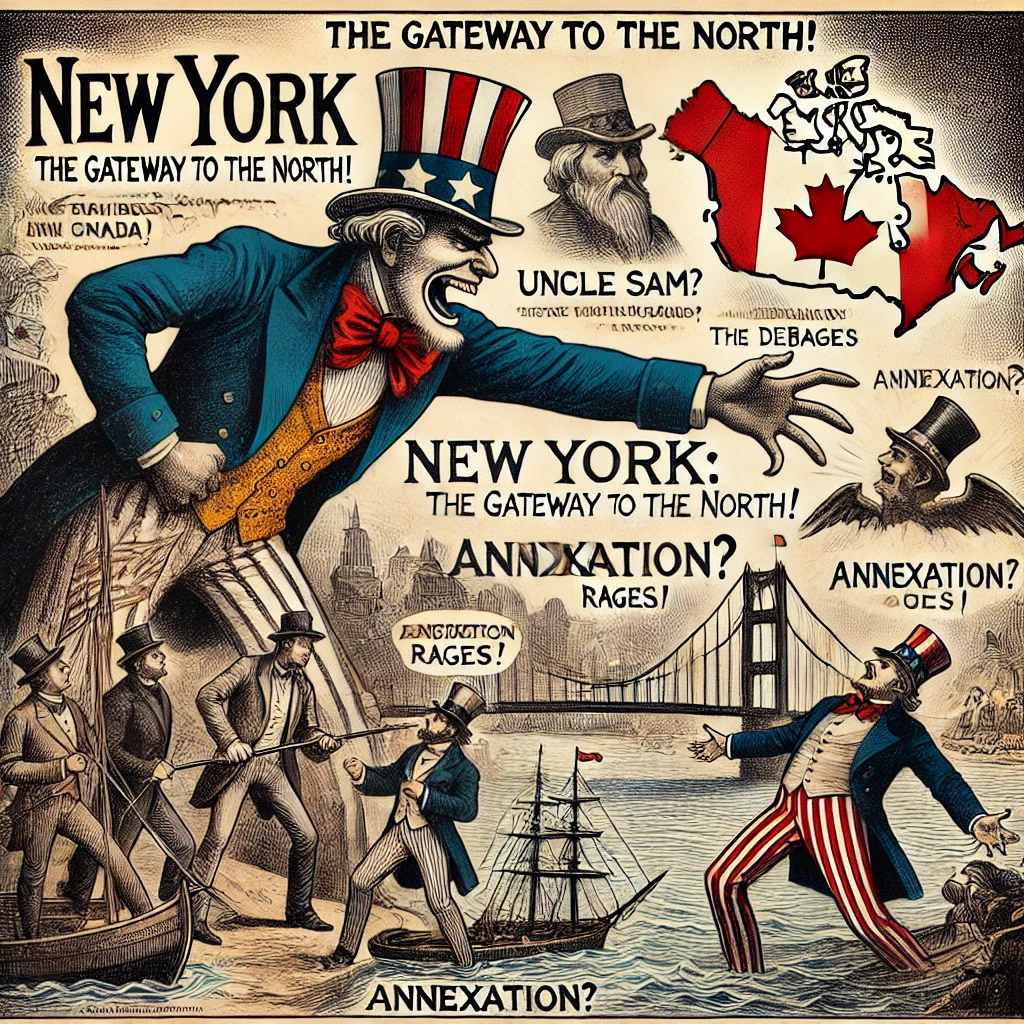The Great Merger: How Trump’s Tariffs and Economic Collapse Led to Canada Joining the U.S.
By Hans Wilder Digital Media USA
From 1812 to 2025: A Historic Shift in North America
When British North America and the United States clashed in the War of 1812, few could have imagined that, centuries later, their descendants would unite under one flag. The war, fought over trade, national identity, and territorial expansion, left a lasting impact. The burning of Washington, the defense of Canada, and the battles on the Great Lakes defined a rivalry that shaped both nations. But despite that bitter conflict, the two countries evolved into strong trading partners, cultural allies, and economic co-dependents—until now.
As of February 1st, 2025, history will be repeating itself. Once again, economic strife and trade wars are altering the fate of North America. But unlike in 1812, this time, the battle isn’t being fought with muskets and warships—it’s happening in boardrooms, on stock markets, and in government halls. The collapse of Canada’s economy, triggered by years of economic mismanagement and Trump-era trade policies, has led to the most significant geopolitical shift of the 21st century: the annexation of Canada into the United States.
The Coming Fall of Canada and the American Response
The seeds of annexation were planted today by Trump, when the United States imposed tariffs on Canadian steel, aluminum, and dairy. The impact will be immediate, but Canada will resist. However, as the Biden administration struggled with inflation and economic uncertainty, relations with Canada remained strained. By 2024, a perfect storm of economic collapse, political turmoil, and a failing healthcare system left Canada teetering on the brink.
Key events leading to the annexation:
- Early 2024: Canada’s housing market crashes, sending mortgage defaults skyrocketing.
- Mid-2024: Oil-rich Alberta, struggling with a collapsed energy sector, threatens to separate from Canada.
- Late 2024: The Canadian dollar plummets, and Ottawa faces a government shutdown.
- Very Soon in 2025: In a desperate move, Canada’s leaders reach out to Washington for economic support. The U.S. offers a solution: integration into the United States as 13 new states.
By mid-2026, the process will be complete, officially expanding the U.S. to 63 states.
How Annexation Will Unfold in beginning in 2025
The transition is expected to follow a six-month phased plan:
- September-November 2025: U.S. Congress passes emergency legislation to establish transitional governance for Canada’s provinces.
- April 2026: Canada’s federal government dissolves, and U.S. agencies begin overseeing economic recovery efforts.
- May-June 2026: The Canadian military is integrated into the U.S. Armed Forces, and citizenship conversion begins.
- July 4, 2026: Official statehood ceremony, making Canada’s provinces official U.S. states.
These new states will maintain some regional autonomy but will operate under U.S. federal law. Quebec, given its unique culture and language, will receive a “special status” similar to Puerto Rico, preserving its civil law system and language rights.
St. Lawrence Valley: The New Economic Powerhouse
One of the most immediate benefits of annexation is the massive infrastructure investments in the St. Lawrence Valley, the historic corridor of trade and commerce between the U.S. and Canada.
Major projects include:
- New bridges and tunnels connecting Kingston, Ontario, to I-81 and Upstate New York via Wolfe Island.
- Wolfe Island would be transformed into a “free trade zone” and rid them selves of the ugly; bird killing windmills.
- The Montreal-Burlington High-Speed Rail, reducing travel time between the two cities to under an hour.
- The Quebec-New York Expressway (I-99 North), directly linking Quebec City to Albany, strengthening trade routes.
- Upgraded ports along the Great Lakes and St. Lawrence Seaway, boosting economic activity between the former Canadian provinces and New York, Michigan, and Ohio.
By 2030, the St. Lawrence Valley is projected to outpace California’s Silicon Valley in economic growth.
The Vancouver-Seattle Effect: A High-Speed Super City
With British Columbia now a U.S. state, Vancouver and Seattle have merged into a single economic and cultural zone, driven by high-speed infrastructure and shared business opportunities.
- The Vancouver-Seattle Hyperloop now connects the two cities in under 30 minutes, making daily commutes possible.
- Tech giants like Amazon and Microsoft expand north, turning Vancouver into America’s new West Coast tech hub.
- Hollywood North becomes Hollywood West, as Vancouver’s film industry fully integrates into the U.S. entertainment economy.
The Pacific Northwest is now America’s fastest-growing urban corridor, rivaling New York-Washington and Los Angeles-San Francisco.
The Arctic State: America’s New Frontier
With the Yukon, Northwest Territories, Nunavut, and now also Greenland consolidated into the U.S. Arctic State, America has gained a powerful new strategic and economic asset.
✅ Military Expansion – The U.S. now controls the Northwest Passage and Greenland’s vital air and naval bases, securing dominance over Arctic trade routes and military operations.
✅ Energy & Minerals – The Arctic’s rich oil, gas, and rare earth minerals—along with Greenland’s vast deposits of uranium and critical metals—make it an economic powerhouse.
✅ Geopolitical Power – With Greenland, the U.S. gains unprecedented influence over Arctic affairs, countering Russian and Chinese ambitions while strengthening NATO’s northern defenses.
Nicknamed “America’s Last Great Wilderness,” the Arctic State is set to receive billions in federal investment for infrastructure, research, and defense, cementing its role as the keystone of U.S. Arctic strategy.
Fort Drum: From Military Base to Smart Federal City
With vast new lands available for military use, Fort Drum, once the largest federal tract in New York, is no longer needed as a base. Instead, it is being transformed into America’s first smart federal city, featuring:
✅ AI-driven infrastructure and high-speed rail connections to New York, Boston, Ottawa, Toronto and Montreal.
✅ Eco-friendly urban planning, powered by fusion energy.
✅ A federal innovation hub, attracting research in defense, AI, and cybersecurity.
Fort Drum “to be renamed to something iconic” is set to become the Northeast’s first fully autonomous city, a model for future urban development.
A New Era for North America
With Canada now fully integrated into the U.S., the world is watching as North America transforms into a continental superpower. The annexation has reshaped global politics, expanded American economic dominance, and altered the daily lives of millions.
While many former Canadians embrace lower taxes, better healthcare access, and stronger economic prospects, others mourn the loss of their national identity. Quebec remains divided, and some fear the cultural homogenization of the newly integrated states.
Yet, for Washington, the move was inevitable: an economic necessity, a strategic advantage, and a geopolitical game-changer.



